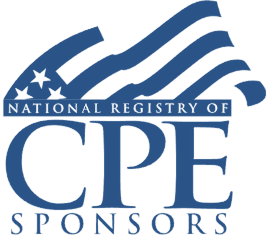- videocam On-Demand
- signal_cellular_alt Intermediate
- card_travel Corporate Tax
- schedule 110 minutes
Commonly Overlooked State Tax Credits and Incentives: R&D, Investment, Jobs Tax Credits, and More
Excelsior Programs, CA Competes, NY Qualified Emerging Tax Credit, NYC Musical Tax Credit
Welcome! Strafford is now BARBRI! The expert courses you know from the trusted global leader in legal education.
Description
Many state tax credits and incentives mirror federal equivalents. More than 30 states offer a research and development tax credit. Generally, the state rules for the credit mirror the federal guidelines, however, some states differ. California, for example, defines gross receipts differently and does not include revenue from software, SAAS activity, service and certain other income. Many businesses are not taking advantage of this readily available, lucrative credit. Furthermore, many companies who would be considering amended R&D credit return claims are struggling to meet the rigorous federal guidelines recently released in Field Attorney Advice (FAA) memo 20214101F.
One commonly offered state credit is the investment tax credit. In New York, the list of eligible property includes R&D property and property used by the taxpayer to produce goods. Taxpayers can often take the credit for purchases they were willingly making anyway. State tax advisers need to be aware of the most common state credits and incentives to help increase cash flow for businesses.
Listen as our panel of SALT experts describes the business activities that most often generate state tax credits, general eligibility requirements, and the steps to claim these credits in specific states.
Presented By

Mr. Halpern is a tax & business services partner at Marcum LLP’s New York City office. He helps clients navigate the complexities of all areas of state taxation including general consulting, obtaining and negotiating business credits and incentives, audit defense, strategic planning, apportionment sourcing studies, nexus considerations and resolutions. Mr. Halpern also has extensive experience advising clients on New York State and New York City tax matters, having successfully represented corporations and partnerships before state taxing authorities and negotiated settlements and penalty abatements. His focus is on understanding the needs of his clients and delivering high value quality professional services to companies across all industries including manufacturing, technology, media and entertainment, healthcare, and financial services.

Mr. Leaheey, CPA, CGMA, MSA, is a Director in the R&D tax credit practice at Marcum LLP in Chicago. He has more than 15 years of professional experience providing tax and consulting services to various industries in the United States and abroad. Mr. Leaheey has spent extensive time in China where he assisted in strategy and process implementation. Prior to joining Marcum, he worked in RSM’s credits incentives and methods practice – with a focus on portfolio companies of private equity groups; and at the Big Four in the captive insurance industry with a focus on self-procurement tax, as well as state and local income franchise tax compliance and consulting. Mr. Leaheey has professional experience in project management and developing cash flow improvement strategies among diverse industries.
-
BARBRI is a NASBA CPE sponsor and this 110-minute webinar is accredited for 2.0 CPE credits.
Date + Time
- event
Thursday, April 28, 2022
- schedule
1:00 p.m. ET./10:00 a.m. PT
Outline
- State credits and incentives
- Research and credit
- Federal credit and recent changes
- R&D credit in specific states
- California
- Other States
- Investment tax credits
- Manufacturer property tax credits
- Job tax credits
- COVID programs for targeted industries
- Training credits
- Many other common credits and incentives
Benefits
The panel will review these and other critical issues:
- Qualifying for the R&D tax credit in CA and other states
- Utilizing NY tax incentives including Excelsior Program, QETC, ITC, and others
- Training and job tax credits
- Manufacturer tax credits available in NY and other states
- Which business activities generally produce state tax credits
NASBA Details
Learning Objectives
After completing this course, you will be able to:
- Identify specific NY state income tax credits
- Determine eligibility requirements for California Competes
- Decide which business activities are more likely to be eligible for state incentives
- Ascertain differences in federal and state R&D credit requirements
- Field of Study: Taxes
- Level of Knowledge: Intermediate
- Advance Preparation: None
- Teaching Method: Seminar/Lecture
- Delivery Method: Group-Internet (via computer)
- Attendance Monitoring Method: Attendance is monitored electronically via a participant's PIN and through a series of attendance verification prompts displayed throughout the program
- Prerequisite: Three years+ business or public firm experience preparing complex tax forms and schedules, supervising other preparers or accountants. Specific knowledge and understanding of SALT taxation, nexus and apportionment as it applies to multi-state businesses.

BARBRI is registered with the National Association of State Boards of Accountancy (NASBA) as a sponsor of continuing professional education on the National Registry of CPE Sponsors. State boards of Accountancy have final authority on the acceptance of individual courses for CPE Credits. Complaints regarding registered sponsons may be submitted to NASBA through its website: www.nasbaregistry.org.

BARBRI CE webinars-powered by Strafford-are backed by our 100% unconditional money-back guarantee: If you are not satisfied with any of our products, simply let us know and get a full refund. Contact us at 1-800-926-7926 .
Unlimited access to premium CLE courses:
- Annual access
- Available live and on-demand
- Best for attorneys and legal professionals
Unlimited access to premium CPE courses.:
- Annual access
- Available live and on-demand
- Best for CPAs and tax professionals
Unlimited access to premium CLE, CPE, Professional Skills and Practice-Ready courses.:
- Annual access
- Available live and on-demand
- Best for legal, accounting, and tax professionals
Unlimited access to Professional Skills and Practice-Ready courses:
- Annual access
- Available on-demand
- Best for new attorneys
Related Courses

Sales and Use Tax Issues for Construction Contractors
Thursday, October 23, 2025
1:00 p.m. ET./10:00 a.m. PT